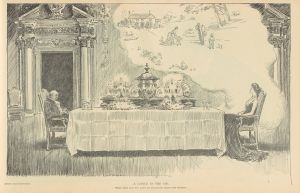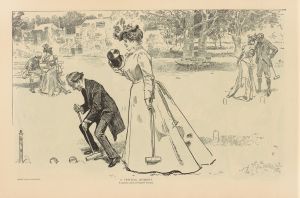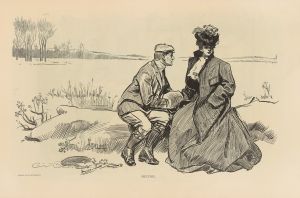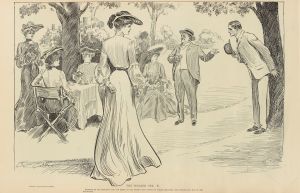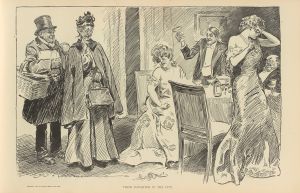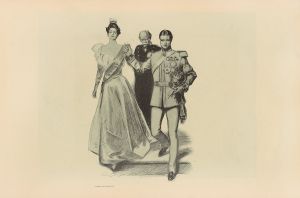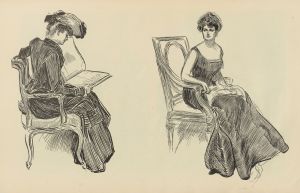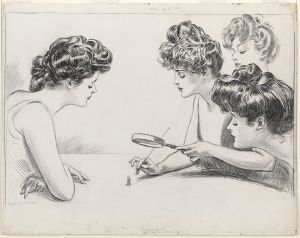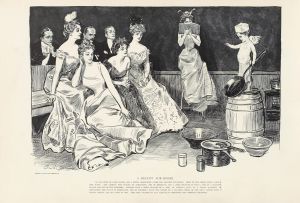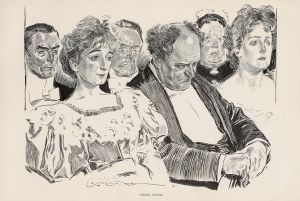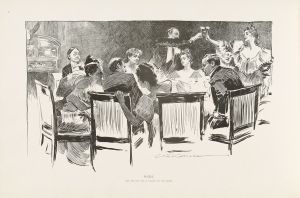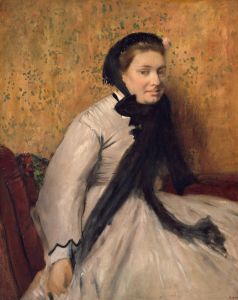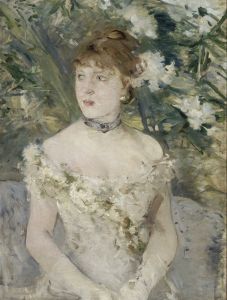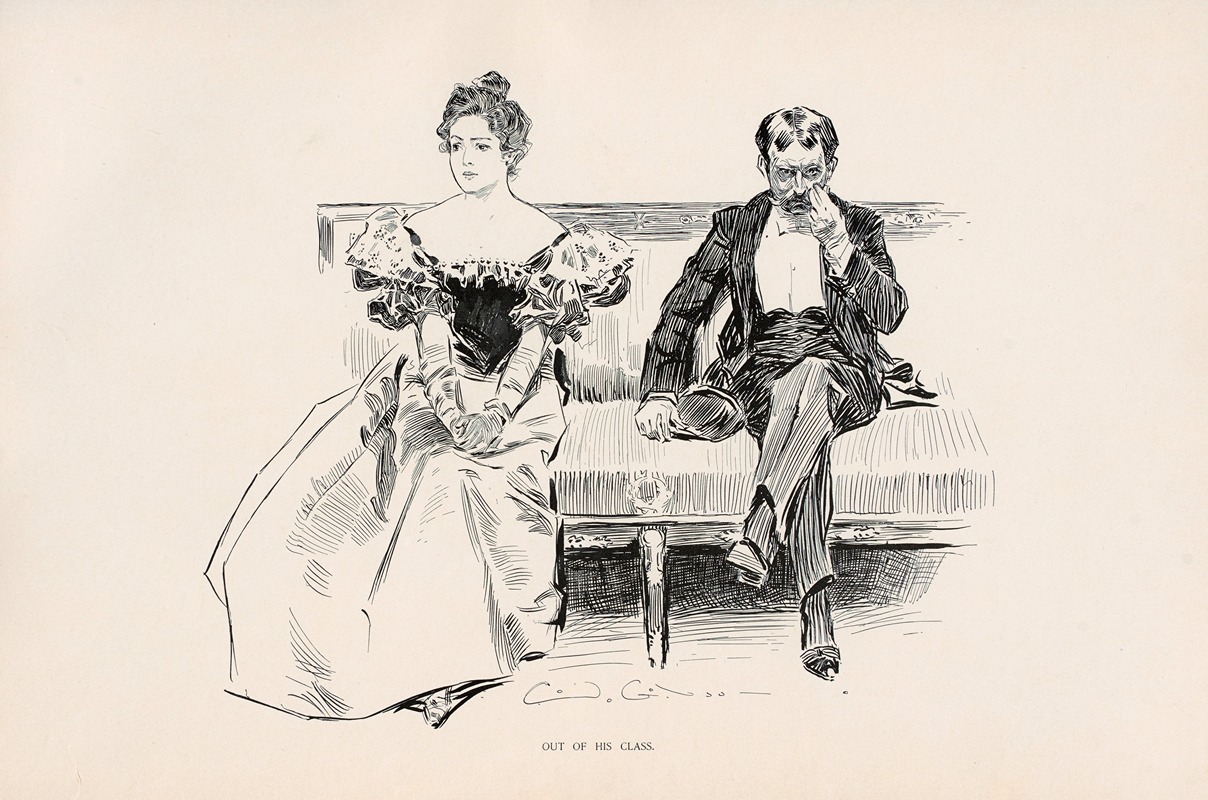
Out of his class
A hand-painted replica of Charles Dana Gibson’s masterpiece Out of his class, meticulously crafted by professional artists to capture the true essence of the original. Each piece is created with museum-quality canvas and rare mineral pigments, carefully painted by experienced artists with delicate brushstrokes and rich, layered colors to perfectly recreate the texture of the original artwork. Unlike machine-printed reproductions, this hand-painted version brings the painting to life, infused with the artist’s emotions and skill in every stroke. Whether for personal collection or home decoration, it instantly elevates the artistic atmosphere of any space.
Charles Dana Gibson was an influential American illustrator best known for his creation of the "Gibson Girl," a representation of the idealized American woman at the turn of the 20th century. His work captured the social dynamics and cultural shifts of his time, often with a touch of humor and satire. One of his notable works is "Out of His Class," which reflects Gibson's keen observation of social structures and relationships.
"Out of His Class" is a black-and-white illustration that exemplifies Gibson's characteristic style, marked by detailed line work and expressive characters. The image typically portrays a social scene, often involving interactions between men and women, highlighting themes of class distinction and romantic pursuits. Gibson's illustrations were widely published in magazines such as Life, Harper's Weekly, and Scribner's, reaching a broad audience and influencing public perceptions of social norms.
The illustration "Out of His Class" is a commentary on social stratification and the challenges faced by individuals attempting to transcend their societal roles. In the late 19th and early 20th centuries, class distinctions were pronounced, and social mobility was a topic of considerable interest and debate. Gibson's work often depicted these themes, using humor and irony to critique the rigid social structures of his time.
Gibson's illustrations, including "Out of His Class," were part of a larger body of work that contributed to the visual culture of the era. His drawings were not only artistic expressions but also social commentaries that resonated with contemporary audiences. The "Gibson Girl" became an iconic image, representing a new, more independent woman who was both fashionable and assertive. This character often appeared in Gibson's work, embodying the complexities of gender and class interactions.
The popularity of Gibson's illustrations can be attributed to their ability to capture the zeitgeist of the period. His work was both reflective and prescriptive, offering a mirror to society while also shaping public discourse. "Out of His Class" fits within this context, providing insight into the aspirations and limitations experienced by individuals navigating the social hierarchy.
Gibson's legacy as an illustrator is significant, as he helped define the visual language of his time. His work continues to be studied for its artistic merit and its commentary on early 20th-century American society. "Out of His Class," like many of his illustrations, remains a testament to his skill in capturing the nuances of human interaction and the societal forces at play.
In summary, "Out of His Class" by Charles Dana Gibson is a notable illustration that reflects the themes of social class and romantic pursuit prevalent in the early 20th century. Through his detailed and expressive style, Gibson offered a critique of the social structures of his time, contributing to the cultural dialogue and leaving a lasting impact on American illustration.





